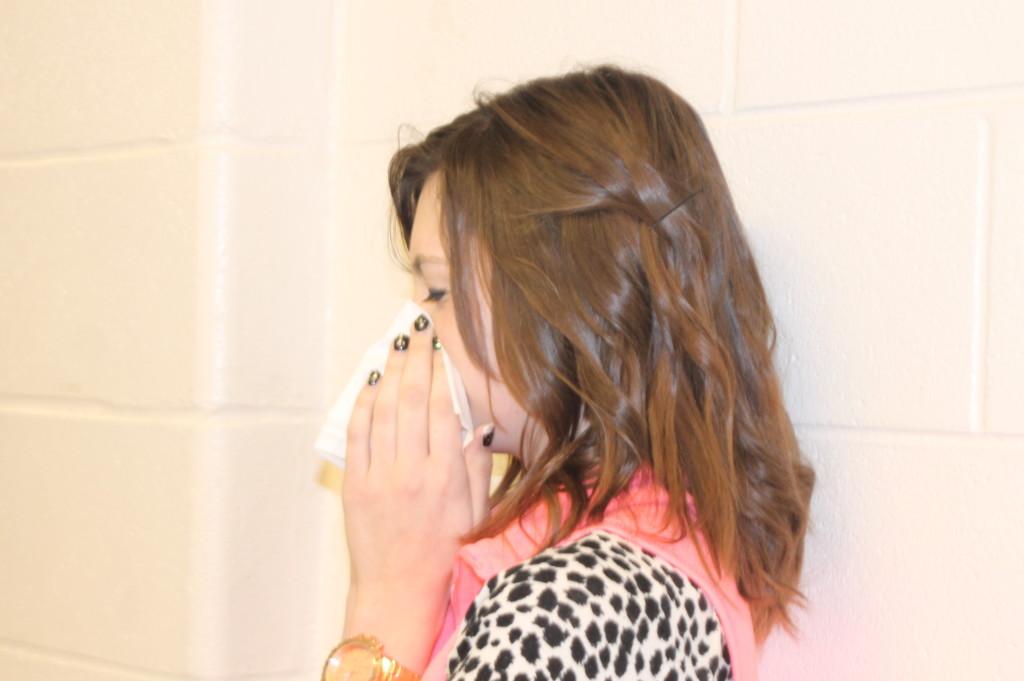By Bryanna Stoiber, Editor
With the holidays around the corner and winter on the way, seasonal viruses are on the rise, and in this case, mononucleosis.
Referred to as the “kissing disease,” it’s a contagious viral disease that infects the lymph nodes. Mono, for short, is usually characterized by a sore throat, fever, swollen gland, and an intense feeling of weakness.
Often caused by the Epsten-Barr virus, (EBV) it’s mostly found in teens and adults. As mono has always been a concern throughout the country, it’s also somewhat concerning at KHS. Senior Katie Kenkel was someone who had to face mono, but had just passed over the sickness.
“I felt awful, like I couldn’t eat anything, and I was just always exhausted,” Kenkel said.
If not treated, mono can become a serious effect to someone’s health. Due to the swelling of the glands and throat, the virus can also cause the spleen to swell and enlarge as well, possibly causing long term effects with an enlarged spleen in the future.
Mono is one of those viral illnesses where symptoms would not show right away if one had the illness. Symptoms aren’t usually felt until four to six weeks after exposure to the infection. For Kenkel, she started feeling really tired about two weeks before she went to the doctor, but she thought it was due to a lack of sleep.
While the disease is rarely fatal, the disease stays in the body and blood cells, possibly affecting someone for the rest of their life. Junior Sean Dunphy had the illness in the spring of 7th grade and doesn’t feel affected by mono whatsoever.
“I’m glad that I don’t feel the symptoms of mono anymore at all because it was really awful,” Dunphy said.
The usual test to determine whether or not someone has mono is a quick screening test, which detects a recent mono infection. A sample of blood is placed on a microscope slide and mixed with other substances. If mono is present, the blood clumps. For Kenkel, the doctor didn’t even have to test her.
“I went to the doctor and he just looked at me and told me. They said they didn’t have to test me because it was obvious I had it,” Kenkel said.
It’s not noticed until weeks after one has contracted it, it’s more likely for someone else to catch the illness as well since the first person wasn’t aware that they were carriers. Junior Juan Delgado had caught mono four weeks before he was tested. “Mono just really wore me out; I had no motivation to do anything whatsoever,” Delgado said.
Even though mono takes time to be completely treated, there are simple ways to treat some of the symptoms.
“My throat stopped completely hurting after being on medication for about four days, but my other symptoms, mostly just being fatigued, still haven’t gone away. My doctor said I’ll have symptoms for up to two more months,” Kenkel said.
The University of Central Arkansas had a serious outbreak of Mono according to the Student Health Clinic. Doctors had diagnosed 12 cases during the past weeks, which is an unusually high number, according to Randy Pastor, the medical director of the clinic. If someone thinks they have mono, the clinic could test them.
In Giese’s opinion and best judgement, the best way to prevent mono is to practice a healthy lifestyle. For example, frequent hand washing, covering one’s mouth, disposing of used tissues and not sharing food or drinks are helpful to prevent from catching any sickness in general. Stay healthy this winter by following her tips.








